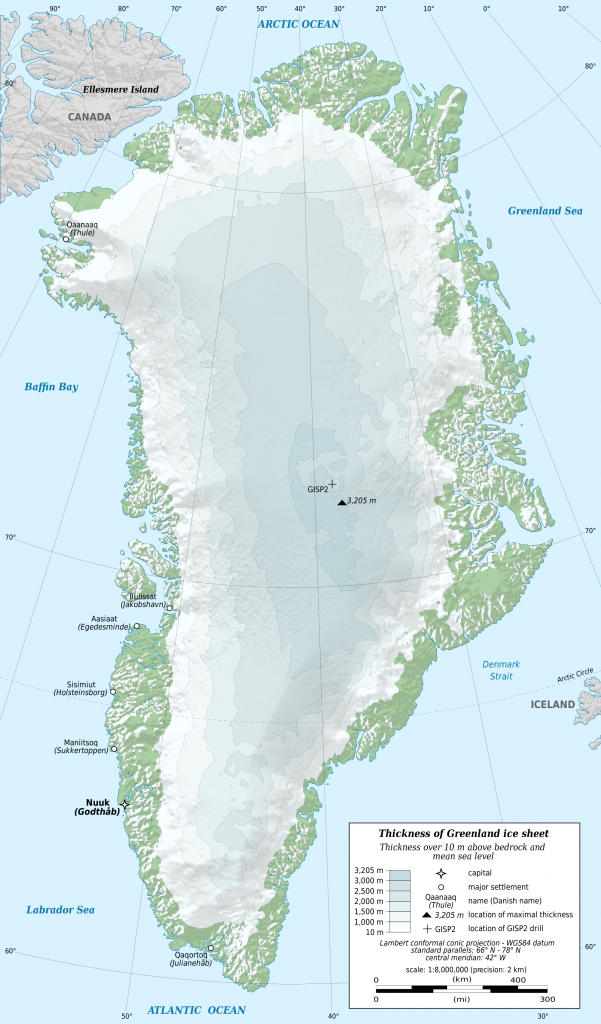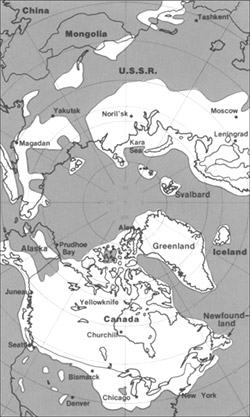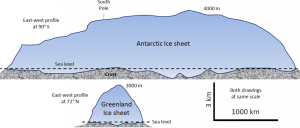14.2: Types of Glaciers
- Page ID
- 6930
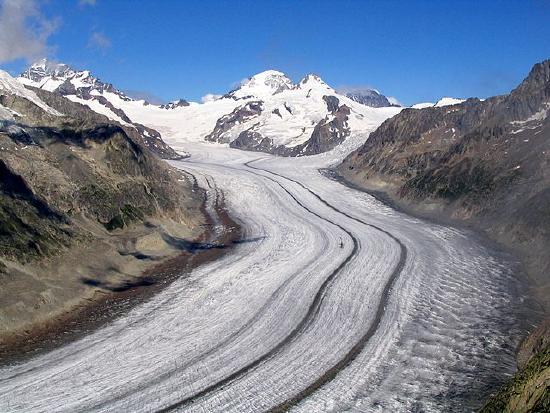
There are two general types of glaciers – alpine glaciers and ice sheets. Alpine glaciers form in mountainous areas either at high elevations or near cool and wet coastal areas like the Olympic Peninsula of Washington. A common type of alpine glacier is a valley glacier which is confined to a long, narrow valley located in mountainous areas especially at higher latitudes (closer to either the north or south pole). Most alpine glaciers are located in the major mountain ranges of the world such as the Andes, Rockies, Alps, and Himalayas.
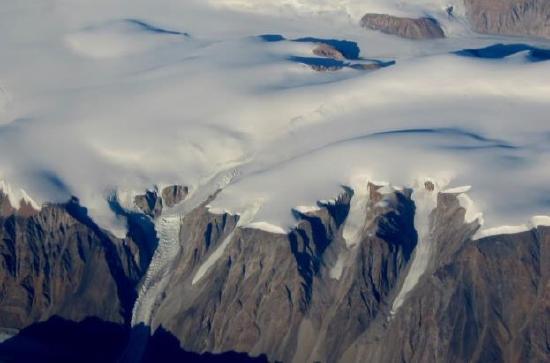
The other major glacier type is ice sheets (also called continental glaciers). These are thick accumulations of ice that occupy a large geographical area. The main ice sheets on the earth today are located on Greenland and Antarctica. The Greenland Ice Sheet has an extensive surface area and thickness up to 3,300 meters (10,800 feet or two miles) and has a volume estimated at nearly 3 million cubic kilometers (~102 billion cubic feet) [1].
The Antarctic Ice Sheet is much larger and covers almost the entire continent. The thickest parts of this massive ice sheet are over 4,000 meters thick (>13,000 feet or 2.5 miles) and its weight depresses the Antarctic bedrock to below sea level in many places beneath the ice [2]. The Antarctic Ice Sheet contains the most ice as illustrated by the figure below comparing cross-sectional views of both ice sheets.
Former ice sheets, present during the last glacial maximum event (also known as the last ice age) in North America, are called the Laurentide Ice Sheet.
